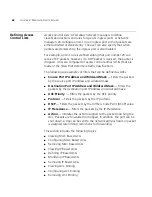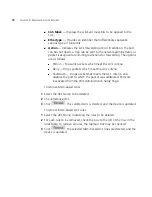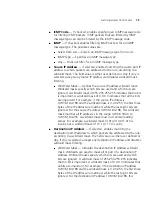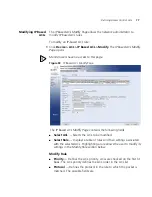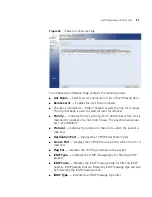
76
C
HAPTER
4: M
ANAGING
D
EVICE
S
ECURITY
wildcard mask matches all IP addresses in the range 149.36.184.0
to 149.36.184.255. A wildcard mask must not contain leading
zeroes. For example, a wildcard mask of 010.010.011.010 is
invalid, but a wildcard mask of 10.10.11.10 is valid.
■
Match DSCP
— Matches the packet DSCP value to the ACL. Either
the DSCP value or the IP Precedence value is used to match packets to
ACLs.
■
Match IP Precedence
— Matches the packet IP Precedence value to
the rule. Either the DSCP value or the IP Precedence value is used to
match packets to ACLs.
■
Action
— Defines the ACL forwarding action. In addition, the port
can be shut down, a trap can be sent to the network administrator, or
packet is assigned rate limiting restrictions for forwarding. The options
are as follows:
■
Permit
— Forwards packets which meet the ACL criteria.
■
Deny
— Drops packets which meet the ACL criteria.
■
Shutdown
— Drops packet that meets the ACL criteria, and
disables the port to which the packet was addressed. Ports are
reactivated from the
Port Administration Setup Page
.
To create a new IP-based ACL:
1
Select
Create ACL
.
2
Enter the name of the new ACL
.
3
Click
. The new ACL is created, and the device is updated.
To define a new IP-based ACL rule:
1
Select
Selection ACL
.
2
Select the ACL from the list.
3
Define the fields for the new ACL rule.
4
Click
. The new IP-based ACL rule settings are configured,
and the device is updated.

